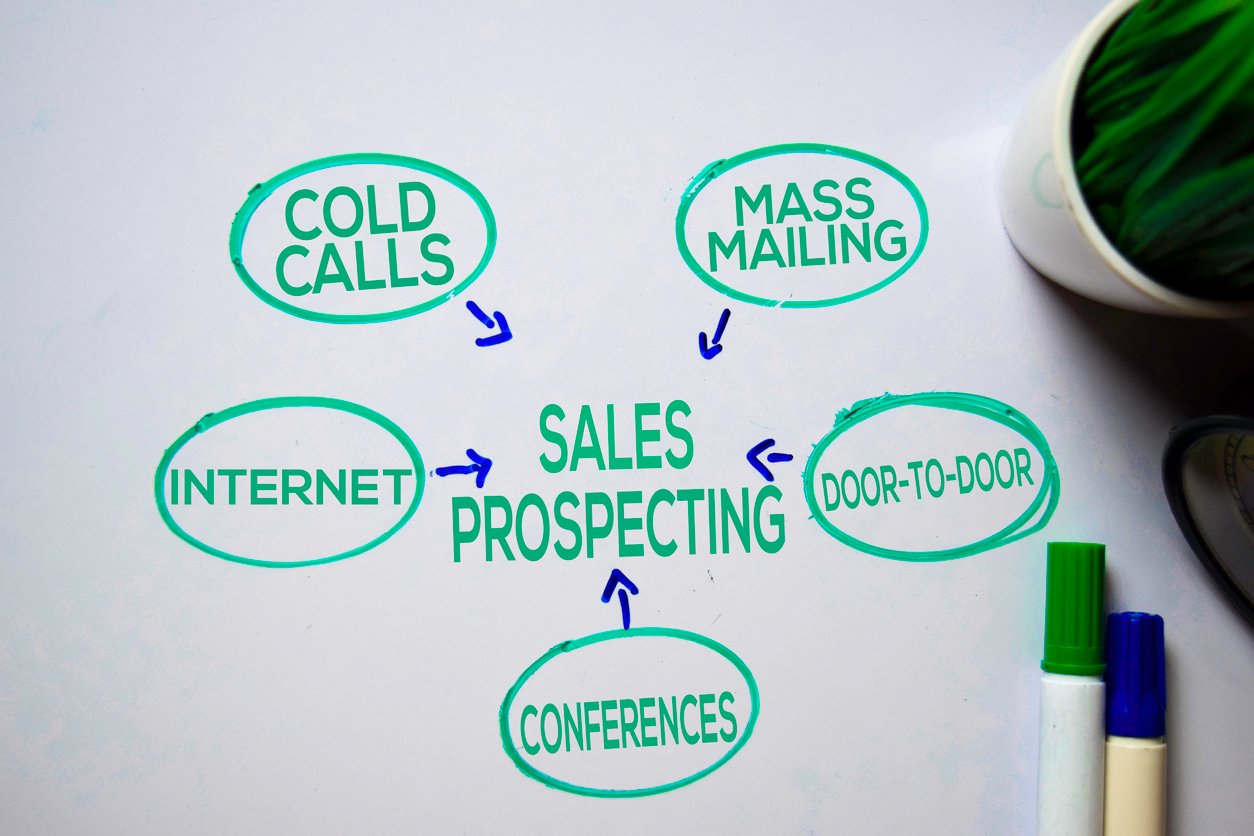
5 Tips & Strategies to Improve the Inside Sales Rep Experience
 Updated on
Updated on
 By Carlos Correa
By Carlos Correa
Carlos Correa
Carlos has been involved in the sales space for well over ten years. He began in the insurance space as an individual sales agent, managing teams as s...
learn more
Carlos Correa
Carlos has been involved in the sales space for well over ten years. He began in the insurance space as an individual sales agent, managing teams as s...
Table of Contents
Table of Contents
Are you stuck looking for ways to improve your inside sales experience? Or are you browsing for better methods for hitting your quotas?
We know the feeling.
Improving your inside sales experience can be a tricky business, but one that has to be achieved.
If not, you're looking at sales teams that fail to hit quotas, a company that doesn't reach its revenue goals, and we all know the trajectory from that point on a lot of wasted resources and failed attempts to keep up with its competition.
But it doesn't have to be this way.
In this article, we'll show you how to tackle the challenges that come with the inside sales experience and take the effectiveness of your inside sales reps to the next level.
Sound like something you might be interested in?
Let's jump in.
What is Inside Sales Experience?
An inside sales rep works remotely to guide potential customers through the sales funnel, from lead to customer, providing them with comprehensive support to find a product or service that can solve their problem.
The typical job description of an inside salesperson includes:
- Understanding customers' issues and spotting sales opportunities.
- Communicating with customers via mail or phone calls.
- Staying updated with the latest product and service information.
- Researching prospective leads to drive sales.
- Meeting quarterly quotas.
While the points in the job description give an overview of the daily activities of your sales rep, you can break it down to get a better understanding of what the inside sales experience entails:
- The constant pressure to deliver on quotas and meet bottom lines.
- Managing up to what seems like a million calls and contacts every day.
- Consistently coming up with new ways to get customers to return calls.
- Thorough knowledge of product features to respond to inquiries effectively.
Your inside sales reps experience is significantly tied to your team's productivity and achieving your sales goals.
Employees are 5-times more likely to stay at a company that engages them and acknowledges their excellent work. Improving your sales team's experience can help you reduce employee acquisition which costs far more than retention.
Implementing inside sales into your sales strategy can help you reduce expenses by 40-90%.
Imagine what you can do with that extra money!
By improving your inside sales experience, you can:
- Cut costs resulting in more leeway on your budget to assign finances towards other prospects
- Have better conversations with customers that lead to more conversions
- Become flexible enough to scale according to the number of leads without negatively impacting the customer experience.
Let's get into inside sales skills that matter.
Core Skills Every Inside Sales Person Needs to Succeed

If your company is hiring for an inside sales role or evaluating the current expertise of your members to look for areas to improve, these are the skills you should be on the lookout for.
Like any other job, it takes a particular set of skills to be a great inside sales rep.
Effective Communication
A significant factor in inside sales is talking with customers on the phone, via mail, or through a video conference. From prospecting to closing the deal, communicating shows the client that you understand their pain points and can support them with helpful solutions.
Effective communication is about more than knowing what to say. It covers:
- Actively listening to leads.
- Building rapport.
- Comfortably answering potential customers' inquiries.
While sales scripts or guides for answering calls and responding to questions are beneficial, you cannot find all the answers in a book.
It is essential to have the ability to mirror the prospective customer's tone accordingly and recommend the right product features that can solve the customer's problems instead of throwing all the information about what your product can do in their face.
Besides the company's website and other online presence like social media, an inside sales rep can be the first line of person-to-person interaction between the company and the customer. Hence, communication plays a crucial role in how customers perceive your brand.
An In-depth Understanding of the Business's Product or Service
Let's paint a scenario.
A customer refers a friend to one of your company's products to help solve an issue they face.
This friend is also considering your competition, but because they were referred to your company, they give you a chance to convince them why your product is the best option for them.
The conversation begins with a member of your inside sales team. After asking a question regarding their problem and looking forward to a persuasive answer, your team member stutters, scrambling to find the correct information.
Now the potential customer has lost confidence in your product without even using it, and you have lost out on an opportunity that would have brought you closer to your bottom line.
An inside sales rep must have a comprehensive understanding of the product's features. It helps them counter objections easily and allows them to conduct themselves with the confidence only thorough knowledge of the product can bring.
Because if you don't understand what you are selling, it can be tough to pitch it to others.
Time Management

Time management lets you do more with less.
Being in sales involves handling a lot of tasks at once. If you are not prospecting, you are building a pitch for a new client. Or you are entering data, answering calls, sending emails, doing research, or dealing with a seemingly endless number of clients every time, all at once.
It's a lot!
While more customers can translate to more money, dealing with several customers ineffectively will negatively impact your quotas, especially when some customers pull out of deals because they felt they were not given priority or did not promptly attend to them.
Knowing how to manage time enables your inside sales rep to allocate time to prospects, deal with more clients to drive more sales, and improve productivity without falling into the multitasking rabbit hole.
That's why modern sales tools can come in so handy. For example, sales personnel claim that CRM shortens the sales cycle and improves sales productivity by 34%.
CRM Know-How
For inside sales reps, CRMs save the world, literally.
It is in the name: customer relationship management!
CRMs help you manage everything related to your customer relationship, from recording their contact information to having a secure and accessible database that you can refer to whenever you need information on your leads.
A CRM like Ringy gives your inside sales reps superpowers as your team gets comfortable with implementing it in day-to-day processes.
A good CRM can be like a sharp sword. In the hands of a skilled swordsman, this weapon can work wonders, but only if they have taken the time to integrate and master it.
The same thing goes for a CRM. To unlock its power and boost your team's efficiency, you need to know how to use it, and the results will undoubtedly follow.
Following Up With Prospects

Following up on your potential customers plays a significant role in convincing them to buy your products.
But following up can be a gray area of sales where inside sales reps risk feeling like they're pushing too hard.
Here are two statistics they should keep in mind: 60% of prospects say "No" four times before they agree to the deal. But on the other hand, 48% of sales reps never make a single follow-up attempt.
That means that almost half of your sales team leaves two-thirds of their sales opportunities on the table!
But when you think about it, this statistic might be very encouraging.
Because if your sales reps are hitting their quotas even though they're only working with one-third of possible opportunities, what might happen to their sales numbers if they start consistently following up with their leads?
Closing a Deal
Let's not lose track of the primary goal.
From actively listening to your prospects and communicating effectively to managing your time and following up on leads with a CRM, all the skills led us here.
Closing the deal!
But let's not kid ourselves – closing the deal is no walk in the park. In fact, 36% of salespeople say it's the most challenging part of their job.
But that only means companies have to be on the lookout for ways to make it easier.
Engaging on social media is one way to go. 78% of sales reps who use social media networking in their sales process outperform peers who don't.
Then there are certain pitfalls sales reps would do well to avoid. For example, sales reps who mention the word ‘discount' on a sales call see a 17% drop in closing rates.
Ufff. That one's gotta hurt.
And after all of that, most prospects will make their decisions based on several factors including:
- How well the product solves their pain point
- How well the sales reps handled their objections,
- If they're aware of the loss of opportunities that comes with not buying the product
After that, all the sales reps have to do is pull the trigger and ask for a sale.
Maintaining a Good Post-Deal Relationship

One important skill that most inside sales reps miss is the one that matters after you close the deal.
Maintaining a good relationship with customers is crucial for the long-term success of a business. After all, studies show that acquiring a new customer can cost up to five times more than retaining an old one. Better yet, if a company increases its customer retention rate by as little as 5%, it can increase its profits by 95%.
That's why sales reps need to remember that a closed deal is not a single victory. It's the first step on a journey that has the potential to bring continuous benefits to both the sales rep and the customer.
With that in mind, there are certain tactics sales reps should keep in mind.
One of the strategies inside sales reps can adopt is creating a customer feedback loop to ensure they always know what the customer is feeling and thinking, giving them a chance to better tailor their pitches moving forward.
Another option is to send them company newsletters or personalized emails. Sales reps should consider creating a customer communication calendar to ensure they never forget to get in touch with a loyal customer.
Furthermore, 81% of customers say that trust is an important factor when it comes to their buying decisions. But trust isn't something that can be built overnight.
Inside sales reps have to be careful to always follow through on their promises and never give the customer the feeling that they've been deceived.
Common Challenges Inside Sales Reps Face (and How to Overcome Them)

Being an inside sales rep isn't all coffee, calls, and commission. It's more like juggling flaming torches while riding a unicycle, on a sales quota. From outbound dead-ends to CRM chaos, the day-to-day of an inside sales person comes with its own battlefield.
But don't worry. These challenges are common, solvable, and with the right tools (like a CRM system that doesn't make you want to scream), you'll be closing more deals than ever.
Let's break down the top hurdles inside sales reps face and how to crush them like a pro.
1. Low Contact or Response Rates in Outbound Sales
Let's face it: cold outreach can feel... well, cold. Even the most compelling sales pitch can get ghosted. If you're wondering what inside sales reps do all day, this is a big part of it, and it's often the most frustrating.
Despite carefully crafted emails and perfectly timed cold calls, response rates for outbound efforts remain painfully low. According to research, only 23.9% of sales emails are ever opened. Even worse, less than 1% of cold calls result in a meeting.
Why it happens:
- Overused scripts that feel robotic
- Outreach at the wrong time or platform
- Poor lead targeting
- Lack of follow-up rhythm
How to fix it:
- Personalize your messages beyond "Hi [First Name]"
- Follow a multi-touch approach (email, call, LinkedIn)
- Use lead data to time outreach when prospects are most active
A CRM like Ringy can help automate your follow-up schedule without turning your messages into spammy blasts. Its contact timeline helps track past interactions so you're not flying blind.
2. Burnout From Repetitive Outreach or Quota Pressure
Sales isn't for the faint-hearted, and the inside sales role proves it. Between constant outreach and performance targets, burnout is a real threat, especially when every week feels like Groundhog Day.
Common causes of burnout:
- Pressure to hit daily call or email quotas
- Repetitive tasks with minimal variety
- Lack of visible progress or team recognition
How to beat the burnout:
- Break up your day: alternate between calls, emails, demos, and training
- Celebrate small wins, progress is still progress
- Talk to your manager about shifting focus areas periodically
Here's a snapshot of what typically drains inside sales reps, and how to recover:
|
Burnout Trigger |
Impact |
What Helps |
|
High outreach quotas |
Mental fatigue, disengagement |
Mix tasks, rotate responsibilities |
|
Lack of feedback or progress tracking |
Feeling stuck or unnoticed |
Set micro-goals, use dashboards |
|
Monotonous workflows |
Loss of motivation |
Automate repetitive tasks |
You don't need 15 tools to manage your work, but smart automation for reminders and lead follow-ups (like what Ringy offers) can help reduce manual overload without the burnout baggage.
3. Lack of CRM Organization or Lead Segmentation
A messy CRM is like a closet where you keep shoving leads in and then wonder why you can't find anything. This isn't just about cleanliness, poor CRM hygiene leads to missed follow-ups, duplicated outreach, and wasted effort.
Symptoms of poor CRM organization:
- Duplicate or incomplete contact records
- Inconsistent data entry across reps
- No clear segmentation or tagging
Fixes that actually work:
- Define clear input standards (fields, tags, contact stages)
- Audit and clean your CRM weekly
- Use segmentation filters to target specific personas or industries
Inside sales reps with solid CRM habits can save hours every week and close more deals simply because they follow up consistently and send the right messages to the right people.
4. Difficulty Adapting Messaging Across Industries or Personas
What works for a VP of Marketing in a SaaS startup won't work for a compliance officer in manufacturing. One of the trickiest parts of developing inside sales skills is learning how to speak the language of your audience, especially when that audience changes every day.
Why this challenge exists:
- Limited time for research
- One-size-fits-all scripts
- Lack of industry knowledge or messaging frameworks
Ways to adapt your messaging:
- Build persona profiles: Know their pain points, decision criteria, and buzzwords
- Swap out your core value prop depending on the industry
- Create a bank of proven one-liners or case studies for each vertical
Fun stat: According to McKinsey, B2B personalization can improve lead conversion by up to 25%. That's a lot of commission riding on your message matching your prospect.
You don't need a different pitch for every person, but you do need a flexible structure that lets you adjust based on context.
5 Practical Tips to Improve Your Inside Sales Experience
So you want to increase your bottom line and hit more quotas?
Well, if that's the case, then you'll have to follow these five field-tested tips to boost productivity, conversions, and yes, even your sanity.
1. Use a Sales CRM Built for Inside Sales Reps
Let's start with the obvious: if you're still logging calls in a spreadsheet or switching between 6 different tabs just to follow up, it's time for an upgrade. A good CRM is like your sales sidekick, quietly organizing chaos behind the scenes.

What to look for in a CRM:
- Visual pipeline for easy deal tracking
- Smart follow-up automation
- Real-time lead activity insights
- Call and SMS integration
Why it matters: An optimized CRM helps inside sales reps spend less time digging through old notes and more time actually talking to prospects. Trust the 92% of businesses that say using a CRM helped them achieve their income goals.
For example, take Ringy.
From fostering effective communication between your reps and clients to its seamless integration into your workflow to develop a better process to close more sales, you feel your inside sales experience gets a significant lift.
|
Benefits |
Why You Should Care |
|
Communication |
Whether via calls, SMS, or mail, you can easily connect with your customers and team members efficiently. |
|
Task Automation |
Forget about manually handling everything and save more time creating drip campaigns or scheduling emails automatically. |
|
Lead Management |
Access all your leads from one central deck where you can easily track and schedule communication with prospects. |
|
Straightforward Integration |
Easily integrates your work tools and apps to improve your workflow. Need more functionality? You can use its API. |
|
Reporting |
Success can be repeated. Use detailed reports to derive actionable insights on winning campaigns and why others did not work. |
2. Block Distraction-Free Call Sessions
Your brain can only toggle between Slack, email, your CRM, and an open spreadsheet so many times before it taps out. One of the simplest inside sales skills you can build is batching.
Try this:
- Set 90-minute call blocks with zero interruptions
- Use CRM filters to group leads by stage (cold, warm, ready)
- Power-dial through them without switching focus
You'll be amazed how much more productive and confident your outreach becomes when you're not mentally multitasking between tasks and tabs.
3. Personalize Your Scripts and Emails at Scale
Here's the thing: "Hi [First Name], just checking in…" is not personalization. Buyers can smell a template from a mile away, and they're allergic to bland. The best inside sales reps find ways to scale personalization without burning out.
Tactics to make it work:
- Use merge fields like job title, company name, or pain points
- Reference recent company news or LinkedIn activity
- Use a local area code when calling (yes, Ringy supports that)
What's the payoff? Well, including a personalized subject line increases a reader's likelihood of opening the email by 26%. It's not just a "nice to have"—it's the difference between being ignored and being heard.
4. Role-Play Common Objections Weekly
No matter how sharp your pitch is, you'll still hear the same classic objections on loop:
- "It's too expensive."
- "I'm not ready yet."
- "Just looking, thanks."
These aren't blockers, they're opportunities. And the best way to get good at handling them is practice. Regular role-playing (yes, even if it feels awkward) builds muscle memory and sharpens your instincts under pressure.
Quick role-play themes to cover:
- The price vs. value conversation
- Timeline objections: "Q4 maybe…"
- Trust-building for skeptical prospects
Great inside sales experience comes from repetition and prep, not just winging it on a cold call.
5. Track Wins and Losses for Learning
Your calls are more than just transactions, they're a goldmine of insight. Every win (and every hang-up) tells a story, and smart inside sales reps log those stories for future success.
What to track after every call:
- Key objections raised
- What worked in your pitch
- Decision-maker details
- Timing and next steps
Most CRMs, including Ringy, make this easy with call notes and activity logs tied to each contact. The goal isn't perfection; it's progress. Over time, patterns emerge, and your sales game becomes data-informed instead of guess-driven.
Up Your Inside Sales Rep Game
The challenges inside sales teams face are no joke.
For a team to be successful, the company needs to provide it with the right combination of tools and resources that can give inside sales reps a chance of reaching their goals.
These could include:
- Using a CRM
- Organizing team training, and
- Tracking sales performance
By streamlining your business process with a CRM, improving your employee performance and lowering employee turnover rate with team training, and tracking their performance to find potential areas of improvement, companies give themselves a chance to outshine their competition and future-proof their business.
So if you're looking to take the next step, check out this blog about 6 Pro Tips to Exceed Your Sales Goals or contact Ringy to request a demo today!

Skyrocket your sales with the CRM that does it all.
Calling? Check. SMS? Check. Automation and AI? Check. Effortlessly keep in touch with your customers and boost your revenue without limits.

Take your sales to new heights with Ringy.
Sales in a slump? Ringy gives you the tools and flexibility you need to capture leads, engage with them, and turn them into customers.
Subscribe to Our Blog
Enter your email to get the latest updates sent straight to your inbox!
Categories
Related Articles




































































































